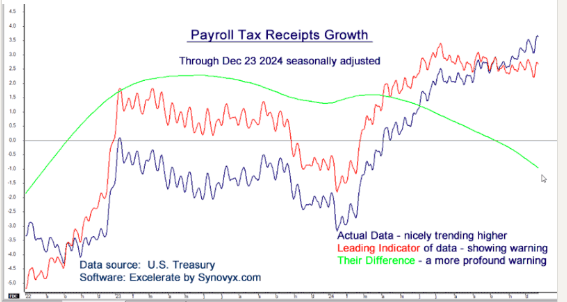Payroll Tax Receipts: What Are They and Why Do We Use Them?
Every time a company processes payroll, it deducts payroll taxes and submits them to the U.S. Treasury electronically. These deposits appear in the Treasury’s bank account the next day. As the economy grows, the amount of these deposits increases, and vice versa. Since the U.S. is primarily a service economy, monitoring the growth of Payroll Tax Receipts is an excellent way to gauge economic growth. However, understanding this data requires some effort. Unlike most economic data from the Federal Reserve, Payroll Taxes are embedded in the Treasury’s bank account. The Federal Reserve publishes monthly unemployment surveys, often obtained through telephone calls, but Payroll Taxes reflect the actual taxes paid by job holders, not estimates. While the Fed seasonally adjusts its data, the Treasury does not need to adjust its bank account data.
Payroll data is highly seasonal, which is why it is often overlooked by financial journalists. Consequently, it is rarely reported. However, Payroll Tax data is available daily with only a one-day lag, whereas most Federal Reserve data is monthly with a three-week lag. For those who can identify seasonality and have the software to adjust for it, Payroll Tax data offers significant insights. Payrolls are processed weekly, bi-weekly, semi-monthly, and monthly. There are notable increases in summer construction jobs and pre-Christmas sales jobs. All these factors can be seasonally adjusted to provide a clear picture of job growth. Historically, this data goes back to 1997. Here’s a current look:

